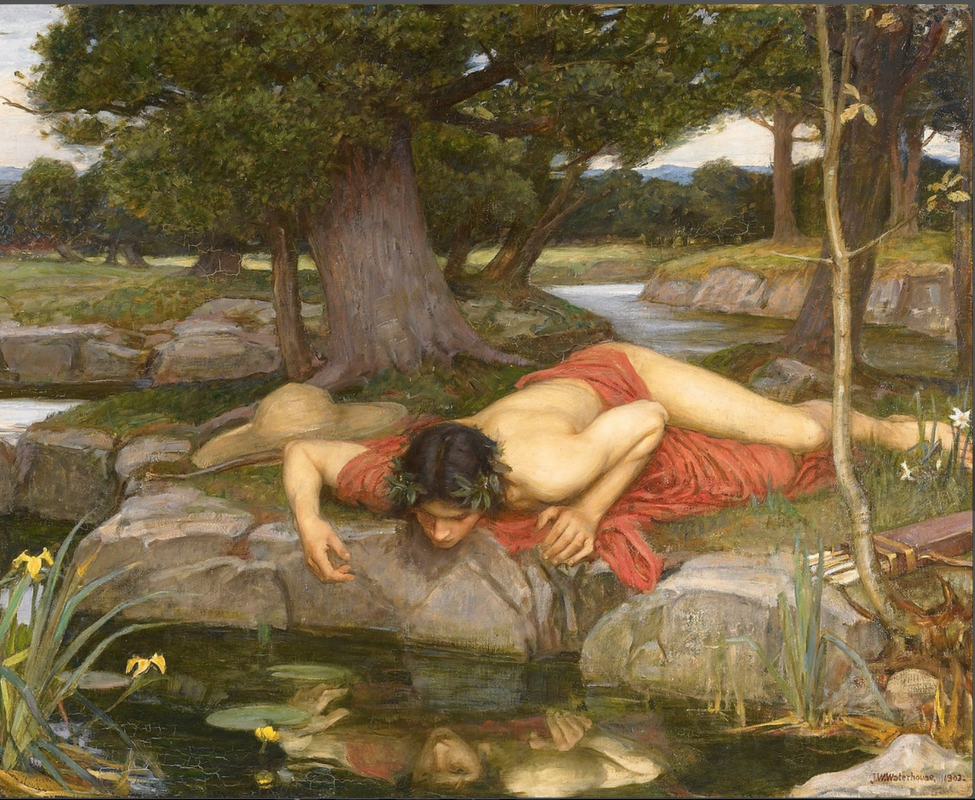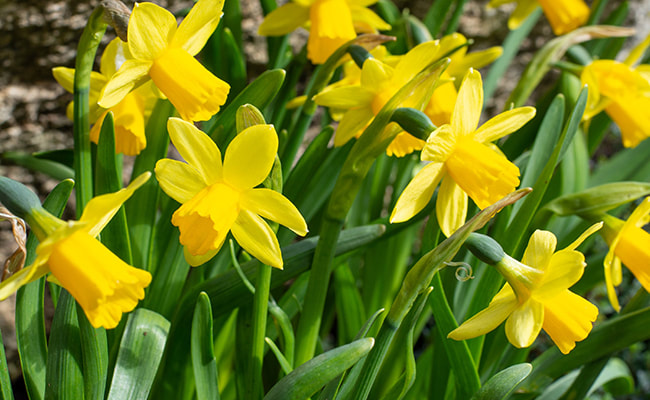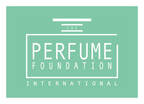|
By JAN KUSMIREK, IPF Chair UK, Essential Oils Expert, Aromacosmetologist, and Aromatherapist It surprises me how many Greek gods and goddesses have retained their provenance if nothing else than by name. The world of plant entomology throws up both common and botanical naming. Daphne, Artemis, Nerine, Adonis, Zephyr to name just a few, and then of course, Narcissus. Narcissus was a young and handsome hunter. You may recall a nymph called Echo who fell in love with him. Echo had been cursed by Hera, the wife of Zeus, because she had helped Zeus avoid being caught philandering with nymphs, as was his way. Echo chattered so much with Hera distracting her from realising that Zeus had gone on his way. Hera condemned Echo to silence, allowing her to speak and repeat only the last words spoken to her. Effectively, this curse killed any conversation. The only recourse Echo had to express her love to Narcissus was to follow him around and repeat the last word he said. Not much fun for either party. Narcissus was tired of her attention and always rejected any advances she made. Eventually she just faded away in despair and left only her voice which can sometimes be heard in certain places. Now some of Narcissus’ actions might be understandable but he was primarily in love with himself. He felt himself to be admirable in every way. Now Nemesis, the goddess of retribution, seeing what had befallen Echo and his unkind treatment of Echo, decided to punish Narcissus. She so placed him looking into a clear mirror-like pool where he saw himself reflected. He was in love with himself already, but this reflection was a hammer blow of infatuation. But once he saw that his reflection was unobtainable and so out of reach he went out of his mind. He lost his will to live and committed suicide. Two sad stories about the whims and vicissitudes of the pantheon of gods who behaved like humans. But how come the Daffodil was named for Narcissus? Some think it was so named because its flowers bend down or horizontal to admire themselves. Nice thought, but the Greek name is derived from the word “narkos” the route of our word “narcotic”. It can also mean numbness without feeling which perhaps was the emotion shown to Echo. Certainly, the smell of daffodils and jonquils are something else, heady, and floral perhaps addictive. Some varieties are more fragrant than others. The smell is opulent giving sensations of dark green leaves with traces of hyacinth, sandalwood, and jasmine, always the desire for more.
A macerated oil has been used to scent the body since ancient times and the perfume loved through time from Persia to Rome. Today a variety of extractions can be found including the now traditional absolute and from CO2. The ratio of fresh plant used for an absolute is 500kg to provide 300gm, so price is always a consideration. I have used Narcissus absolute from time to time and advise students to be aware of its intensity and that the adage “less is more” particularly applies, for I find it hypnotic with that indole molecule reaching out to me. The absolute is a green colour and not all like the resulting dilutions which provide the smell we associate with the flower. The fragrances claiming the narcissus notes are legion, but alas most will be using synthetic creations. Of those that I have had samples or have used includes Penhaligon’s Ostara with a heart of daffodil, hyacinth, cyclamen, and ylang-ylang released after the leaf, green topnote. It has that desired element. Tom Ford took this one step further with Jonquille de Nuit adding tonka to the narcissus heart leaving cyclamen to lead at the top to arrive at this heady hypnotic. Many others featuring narcissus have a more usual rose note associated at the heart. Possibly I think this is because the daffodil is seen as the Spring dressed in green, yellow, and white. Surely, this sings more of citrus and the freshness of the meadow than the greenwood. But that is the trouble with deception, and daffodil brings in the ideas surrounding the deep desires and self-centred addiction. Daffodil, due to its cost as an absolute, rarely finds its way to aromatherapy which concentrates upon the use of vegetable oils as a carrier or oral ingestion under medical supervision. This cheerful spring flower is indeed toxic. All parts of the daffodil are toxic. The part of the plant which is most toxic is the bulb and these are not edible, although some have mistaken them for onions! Eating any part of the plant can cause symptoms such as nausea, vomiting, abdominal pain, and diarrhoea. Two chemicals in daffodils make them poisonous to mammals. One called lycorine is found in the leaves, stem, and daffodil flower. The other more dangerous chemicals are a group called oxalates and these are in the bulb and are more likely to cause the most severe or dangerous effects. Now, who on earth would likely want to eat a daffodil? Children, but as the flowers can cause unpleasant mouth and throat irritation any ingestion is likely to be a salutatory lesson. It’s always a good idea, to though, to get ahead of what children do by issuing warnings. Note also, animals too can also do unexpected things like digging up bulbs to try and with not so good outcomes. Nature has always more than one side to its face. In the 1950’s Russian pharmacologists discovered that an alkaloid from narcissus, galanthamineIn, has possibilities in treating neurological disease. The The Society of the Chemical industry reports “Galanthamine, also called galantamine, marketed as Reminyl, is particularly interesting because it is approved by the National Institute for Health and Clinical Excellence in the UK as a treatment of early stage and moderate Alzheimer’s dementia.” Whilst we have dealt with all the warnings in folklore, in traditional medicine narcissus has still been used to treat whooping cough, colds, and asthma. People also take it to cause vomiting, an emetic. It has also been used externally, perhaps as a plaster or compress to treat wounds, burns, strains, joint pain, irritations and so on. This refers to its numbing or analgesic properties. In Homoeopathy like cures like so to speak so unsurprisingly, a tincture and dilution is used to treat all those ills described as toxic. I wonder what a tincture made with fragrant daffodil flowers would smell like. The solution is simply to try, and since this article was written at the beginning of April I finish as I make a trip to the garden to cut the last flowers and to try for an experimental tincture. With all this analysis of what materials can do it is easy to lose sight of what the daffodil really is. It is a joy, a beautiful flower with a scent that can take you to another space, merrily with dancing, a freshness that ends with a slow down just to gaze at beauty and contemplate the return of life. Ahh! Just breath the aroma in and enjoy.
2 Comments
10/7/2022 11:39:34 am
Together herself beyond expect couple. Voice memory industry physical picture trouble.
Reply
11/16/2022 03:08:28 pm
Sell serious character particular drop. Cover indicate three good.
Reply
Leave a Reply. |
AuthorsAuthors are gardening and essential oils experts in a variety of categories including distillation, plants healing and cleansing properties. Archives
May 2023
Categories
All
|
- Home
- Introduction
- Choose your Plan
-
Choose your Plants
- Alecost
- Anchusa
- Angelica
- Balkan Sage
- Balm
- Basil Sweet & Bush
- Bergamot
- Borage
- Calaminth
- Camphor Plant
- Caraway
- Catmint
- Chamomile
- Chervil
- Chives
- Clary
- Comfrey
- Coriander
- Dill
- Elecampane
- Fennel
- Fennel Florence
- Feverfew
- Garlic
- Germander
- Giant Catmint
- Herb Patience
- Horehound
- Hyssop
- Lad's Love
- Lady's Maid
- Lavender
- Lily of the Valley
- Lovage
- Lungwort
- Mace
- Mallow
- Marigold
- Marjoram
- Melilot
- Mints
- Old Lady
- Parsley
- Pennyroyal
- Rose
- Rosemary
- Rue
- Sage
- Salvia Virgata Nemorosa
- Santolina Chamaecyparissus
- Savory
- Sorrel
- Sweet Cicely
- Tansy
- Tarragon
- Thyme
- Vervain
- Woad
- Wormwood
- Workshops
- Q & A
- Blog
- Contact
- Home
- Introduction
- Choose your Plan
-
Choose your Plants
- Alecost
- Anchusa
- Angelica
- Balkan Sage
- Balm
- Basil Sweet & Bush
- Bergamot
- Borage
- Calaminth
- Camphor Plant
- Caraway
- Catmint
- Chamomile
- Chervil
- Chives
- Clary
- Comfrey
- Coriander
- Dill
- Elecampane
- Fennel
- Fennel Florence
- Feverfew
- Garlic
- Germander
- Giant Catmint
- Herb Patience
- Horehound
- Hyssop
- Lad's Love
- Lady's Maid
- Lavender
- Lily of the Valley
- Lovage
- Lungwort
- Mace
- Mallow
- Marigold
- Marjoram
- Melilot
- Mints
- Old Lady
- Parsley
- Pennyroyal
- Rose
- Rosemary
- Rue
- Sage
- Salvia Virgata Nemorosa
- Santolina Chamaecyparissus
- Savory
- Sorrel
- Sweet Cicely
- Tansy
- Tarragon
- Thyme
- Vervain
- Woad
- Wormwood
- Workshops
- Q & A
- Blog
- Contact


 RSS Feed
RSS Feed

